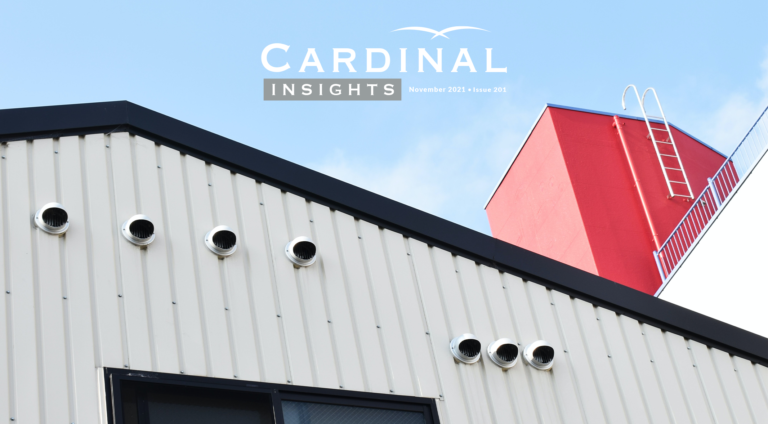
Charlotte is getting a lot of attention these days, which makes it hard for folks like me to find a good deal.
Industrial has been the golden child in commercial real estate for years. It’s been the gift that keeps giving. Analysts are still bullish about industrial, predicting continued growth.
But I believe it won’t continue to be as good as it’s been. But my thinking is contrary to what institutional investors think.
Real estate markets are cyclical, and we are nearing the peak of the industrial market. Plus, there have been significant events and changes within the sector that will slow growth in the future.
I think that three years from now, industrial will be in the dumps, and here’s why:
Amazon has quickly become the largest occupier in Charlotte. However, “3PLs” (third-party logistics providers) have been taking massive amounts of space in Charlotte, and as a result, the vacancy rates are at an all-time low, and there is not much left in the pipeline to be delivered. So it seems like an opportunity – right? Not so quick.
The trouble is the margins of the large 3PLs are squeezed. They are much lower than they used to be. There are low barriers to entry in the trucking business, and it is difficult to differentiate yourself. The result is that the competition is fierce.
I think we will see that these mega tenants didn’t have good enough credit and that construction prices were exorbitantly high when they were built.
Twenty years ago, I was part of a development team that built warehouses close to airports. I started as the boots on the ground for an innovative development concept at the CDIA cargo terminal. We grew the idea, and I ended up spending my days developing warehouses at BOS, JFK, and DWC.
Our primary tenant was FedEx – but there were all of the trucking companies and freight forwarders, too. It seems about every six months, the entire personnel of one of these firms would move over to a new start-up trucking company. The offices were newer, leased trucks were easy to get, and the personnel moved the accounts. Trucking is a tough business.
As a developer, you do not want to cater to a tenant base that is not profitable.
But this is what many developers in the Charlotte region have been doing for the past five years. And it is my opinion that they are wise to be selling whatever inventory that they have.
Also, I can’t imagine that it makes any sense to develop speculative space at this time. That’s because construction costs have gone through the roof (one local developer estimated to me that it was up 40% since 2019), and market rental rates have not followed.
I’ve been in the industrial market for over 25 years; there was a time when I swore I’d never do another industrial deal. Now it’s making up 50 percent of my time. There will be a time in the future when I’ll swear I’ll never want to do another industrial deal but in the meantime, call on us to provide clarity on any industrial transaction you may be contemplating.
Here’s a look at Charlotte’s industrial market through the eyes of institutional investors’ lenses as provided by the Linneman Letter.
Here is how the Charlotte industrial market is perceived by institutional investors & developers:
Unemployment: Charlotte is ranked a “solid” industrial city with 3.3 percent unemployment, a 216 basis point improvement over the past 12 months. Other towns in the Carolinas rated as “hot” are: Durham, Raleigh, and Charleston. The no. 1 industrial market? Salt Lake City.
Dropping industrial vacancy rates: Charlotte is one of the leading industrial markets in the country. It ranks in the top 5 leading industrial markets for the fastest tightening industrial market (illustrated by dropping vacancy rates). Orlando was the fastest tightening, with vacancy rates dropping 2.5 percent in 2020, followed by San Diego, Portland, Las Vegas, and then Charlotte, tied with the Inland Empire in Southern California, with vacancy rates falling 1.8 percent.
In sync or out of balance? The Linneman Report says that using a 6% benchmark, Baltimore, Charlotte (8%), and Dallas were the most out of balance in 2020. This indicates that the demand in Charlotte is much higher than the anticipated pipeline for new deliveries.
Cardinal’s forecast: Charlotte’s industrial market is forecast to continue to be tight, even tightening more. Vacancy rates will continue to drop. CoStar reports that the current vacancy rate is 8%, and I expect it to be below 7% in the next 12 months. Local institutional developers such as Beacon Partners and Childress-Klein will slow their development plans in Charlotte to catch their breath and allow for rates to raise. New developers coming from Chicago, Indianapolis, and the west coast will develop in the periphery of the Charlotte MSA. Much of this speculative development will be funded by overseas capital from Europe, the middle east, and beyond. The City will be passed over by large warehouse users simply because there was no space available which will be a boom for areas like Chester County, Iredell County, and Gaston County.
Are you interested in knowing what I view as the most significant industrial lease or sale transactions in Charlotte so far this year? Are you interested in the projected trends in the Charlotte industrial market? Do you want to know who the most active players are?






